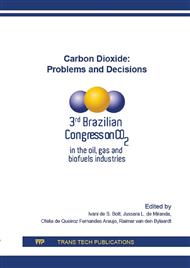p.38
p.46
p.57
p.65
p.71
p.78
p.85
p.95
p.109
Comparative Study of the Performance of SAE 1010, API K55 and API N80 Steels Regarding to Corrosion Resistance in the Presence of High CO2 Pressure
Abstract:
The performance of SAE 1010, API K55 and API N80 steels were evaluated in terms of resistance to corrosion with the use of two CO2-saturated saline solutions (NaCl and CaCl2, both at the concentration of 0.5 M) and wet supercritical CO2 at a temperature of 90°C under 15 MPa for 07 days. Mass loss tests were performed to determine corrosion rates and the films of corrosion product evaluated by scanning electron microscopy and potentiodynamic polarization technique. Lower corrosion rates were obtained in a wet supercritical CO2 medium. The degree of protection offered by corrosion products films depended not only on the steel but also on the corrosive medium and kind of salt present.
Info:
Periodical:
Pages:
71-77
Citation:
Online since:
March 2016
Keywords:
Price:
Сopyright:
© 2016 Trans Tech Publications Ltd. All Rights Reserved
Share:
Citation:


